7 Discoveries That Still Perplex Scientists
Nathan Johnson
Published
01/14/2021
in
wow
Sometimes scientists make discoveries that lack clear explanations. A hypothesis isn't a denouncement of fact, but instead a working theory that can and should change when more research is completed.
Well, some of these discoveries have eluded scientists for far too long.
It might just take a mad-scientists to figure these discoveries out.
Well, some of these discoveries have eluded scientists for far too long.
It might just take a mad-scientists to figure these discoveries out.
- List View
- Player View
- Grid View
Advertisement
-
1.
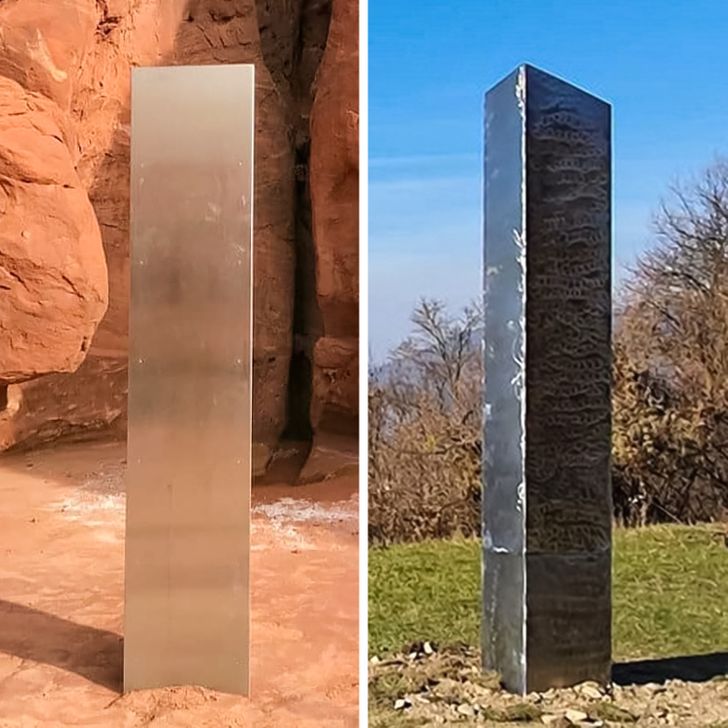 Mysterious monoliths of unknown origin. These 2 metal monoliths were discovered on separate occasions in November 2020. One in a remote area of the Red Rock Canyon State Park, Utah, which has since vanished as mysteriously as it appeared. The other one in Piatra Neamt, Romania. No one has claimed responsibility for their installation. Some think it resembles the monolith in the novel 2001: A Space Odyssey, installed on Earth 3 million years ago by an alien race to develop intelligent life. Whether it be a type of pop-art installation or something of extraterrestrial origin, it has sparked great interest and debate all over the planet.
Mysterious monoliths of unknown origin. These 2 metal monoliths were discovered on separate occasions in November 2020. One in a remote area of the Red Rock Canyon State Park, Utah, which has since vanished as mysteriously as it appeared. The other one in Piatra Neamt, Romania. No one has claimed responsibility for their installation. Some think it resembles the monolith in the novel 2001: A Space Odyssey, installed on Earth 3 million years ago by an alien race to develop intelligent life. Whether it be a type of pop-art installation or something of extraterrestrial origin, it has sparked great interest and debate all over the planet. -
2.
 Antarctica’s tropical past. Antarctica is well known as the coldest and most remote continent in the world. So, it is truly unnatural to imagine it ever being a warm region with lush greenery, inhabited by birds, marine animals, and even dinosaurs. Yet, this is exactly what recent discoveries of fossils and tropical woods point at. Some of the fossilized remains collected on James Ross Island on the Antarctic Peninsula date back to 71 million years ago.
Antarctica’s tropical past. Antarctica is well known as the coldest and most remote continent in the world. So, it is truly unnatural to imagine it ever being a warm region with lush greenery, inhabited by birds, marine animals, and even dinosaurs. Yet, this is exactly what recent discoveries of fossils and tropical woods point at. Some of the fossilized remains collected on James Ross Island on the Antarctic Peninsula date back to 71 million years ago. -
3.
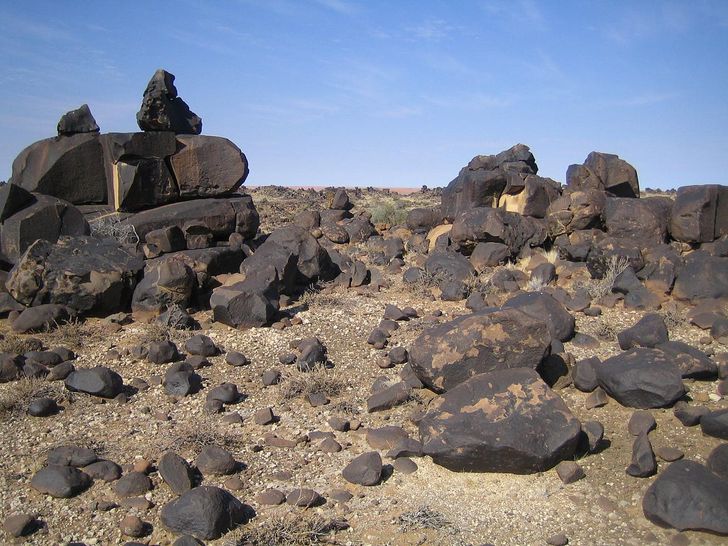 Lost civilization in the Kalahari Desert. In the late 19th century William Leonard Hunt (aka The Great Farini) ventured out on an expedition to the Kalahari Desert, accompanied by his adopted son Lulu. They took pictures and sketched the area that they covered. On their journey, Farini claimed to have encountered the ancient ruins of a lost civilization. This alleged discovery sparked great interest among the explorers of the time. Numerous expeditions have been launched in search of the lost city, however, none were successful.
Lost civilization in the Kalahari Desert. In the late 19th century William Leonard Hunt (aka The Great Farini) ventured out on an expedition to the Kalahari Desert, accompanied by his adopted son Lulu. They took pictures and sketched the area that they covered. On their journey, Farini claimed to have encountered the ancient ruins of a lost civilization. This alleged discovery sparked great interest among the explorers of the time. Numerous expeditions have been launched in search of the lost city, however, none were successful. -
4.
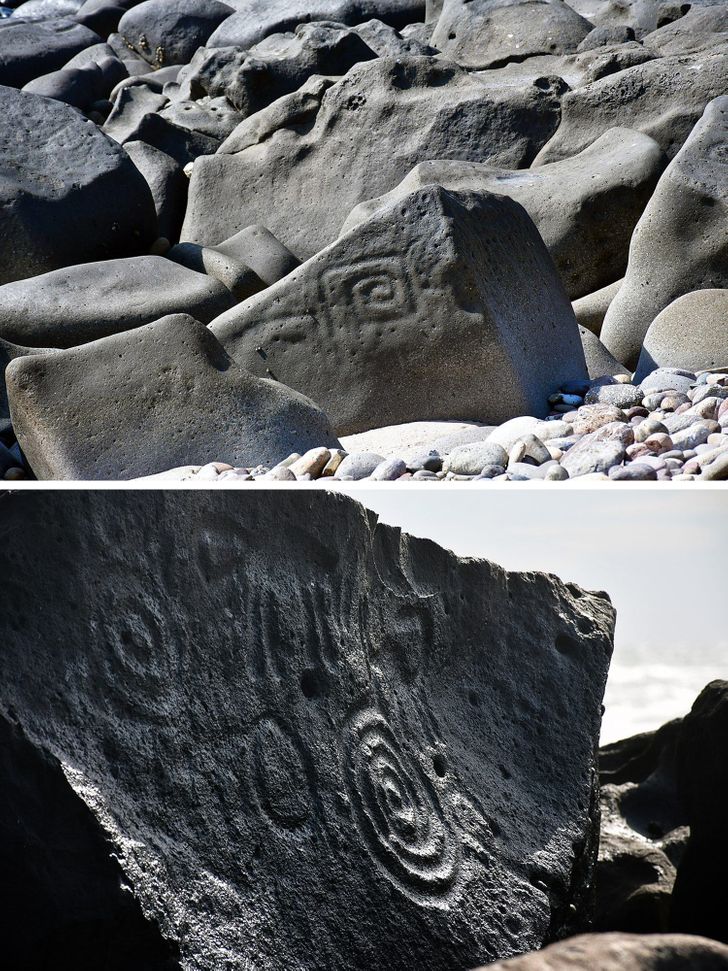 Ancient engravings washed up on the coast of Mexico. Sinaloa petroglyphs, as known to the public, are located on the coast of the Pacific Ocean, in the Southern part of the state of Sinaloa, Mexico. It is a group of rounded rocks of volcanic origin. They are covered in engravings and depict human, animal, and abstract figures, as well as circles, spirals, and crosses. The origin, as well as the meaning of the engravings, has yet to be deciphered, as they date back to between 1,000 BCE and 300 CE. This leaves great potential for the mystery hunters of today to leave their mark in history and solve this modern-day enigma.
Ancient engravings washed up on the coast of Mexico. Sinaloa petroglyphs, as known to the public, are located on the coast of the Pacific Ocean, in the Southern part of the state of Sinaloa, Mexico. It is a group of rounded rocks of volcanic origin. They are covered in engravings and depict human, animal, and abstract figures, as well as circles, spirals, and crosses. The origin, as well as the meaning of the engravings, has yet to be deciphered, as they date back to between 1,000 BCE and 300 CE. This leaves great potential for the mystery hunters of today to leave their mark in history and solve this modern-day enigma. -
5.
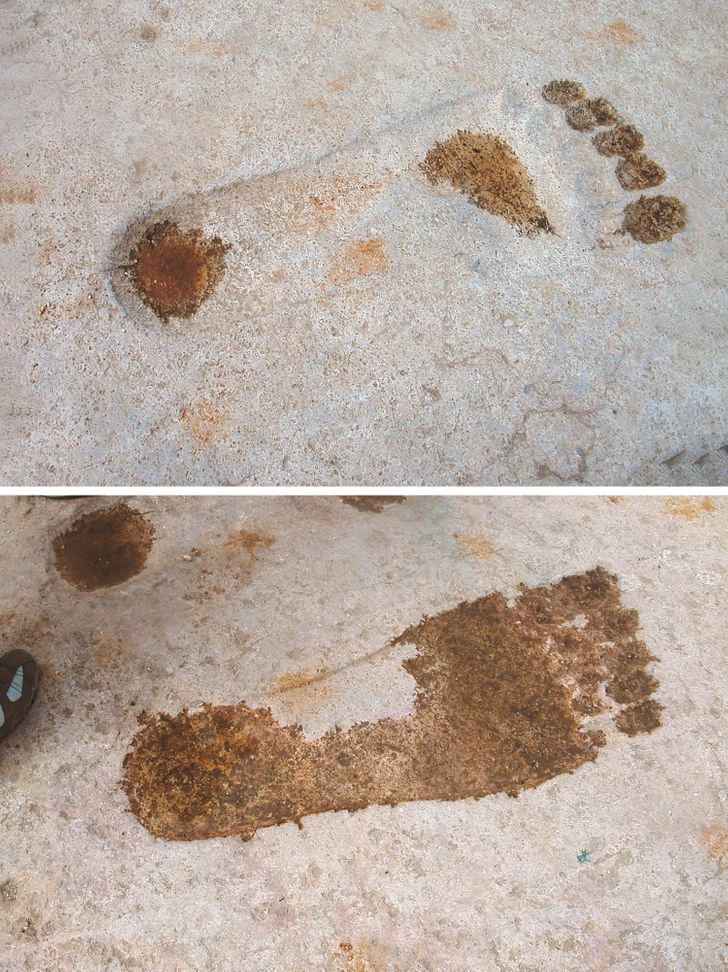 Footprints . of a giant creature in a Syrian temple. The Syrian Ain Dara Temple is famous, among other things, for the several huge carved footprints found throughout its entrance. The size of the footprints is 3 times that of a human foot, but it’s debatable as to whether they are supposed to be from a giant, a human, or an animal. It is still unclear who the carved prints are supposed to represent, but many believe that they are the markings of a divine deity who was entering the temple on its way to the throne inside.
Footprints . of a giant creature in a Syrian temple. The Syrian Ain Dara Temple is famous, among other things, for the several huge carved footprints found throughout its entrance. The size of the footprints is 3 times that of a human foot, but it’s debatable as to whether they are supposed to be from a giant, a human, or an animal. It is still unclear who the carved prints are supposed to represent, but many believe that they are the markings of a divine deity who was entering the temple on its way to the throne inside. -
6.
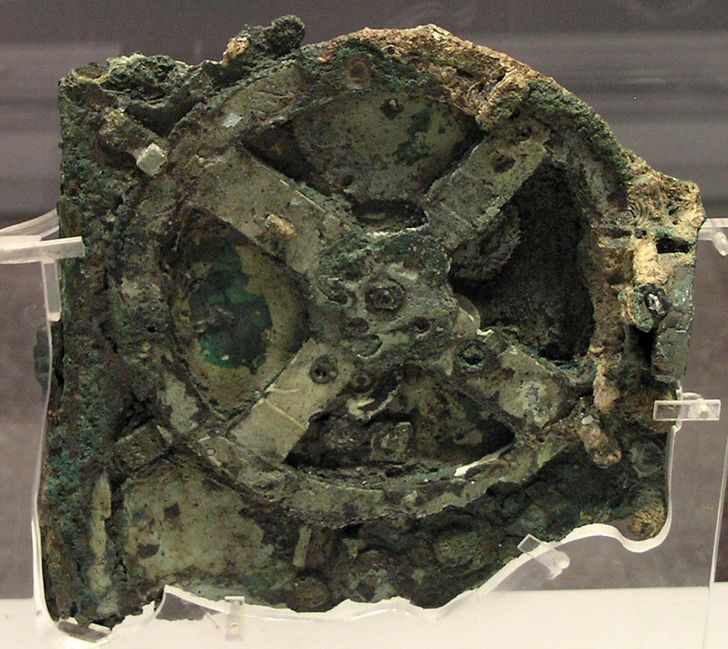 Advanced technology retrieved from the ocean after a millennium. This mechanism was recovered in 1901 from a shipwreck near Antikythera Island, hence its name. It was used to track the cycles of the Solar System. It followed the motion of the Sun, the Moon, Mercury, Venus, Mars, Jupiter, and Saturn. The “celestial clock” even explained which stars rose and set on specific dates. The technology of the instrument was highly advanced and was not seen for another millennium. The origin of the mechanism remains a mystery to modern science.
Advanced technology retrieved from the ocean after a millennium. This mechanism was recovered in 1901 from a shipwreck near Antikythera Island, hence its name. It was used to track the cycles of the Solar System. It followed the motion of the Sun, the Moon, Mercury, Venus, Mars, Jupiter, and Saturn. The “celestial clock” even explained which stars rose and set on specific dates. The technology of the instrument was highly advanced and was not seen for another millennium. The origin of the mechanism remains a mystery to modern science. -
7.
 Stone spheres in Costa Rica. These giant stone sphere monuments are the work of a pre-Colombian civilization that some might even date back to 600 BCE. According to the archeologist who found these stones, they were carved using other smaller stones. Some non-experts even speculate that these stones were used to show directions or for astronomical purposes. Their true purpose is still a mystery because the civilization that actually made these spheres disappeared a long time ago.
Stone spheres in Costa Rica. These giant stone sphere monuments are the work of a pre-Colombian civilization that some might even date back to 600 BCE. According to the archeologist who found these stones, they were carved using other smaller stones. Some non-experts even speculate that these stones were used to show directions or for astronomical purposes. Their true purpose is still a mystery because the civilization that actually made these spheres disappeared a long time ago. -
8.
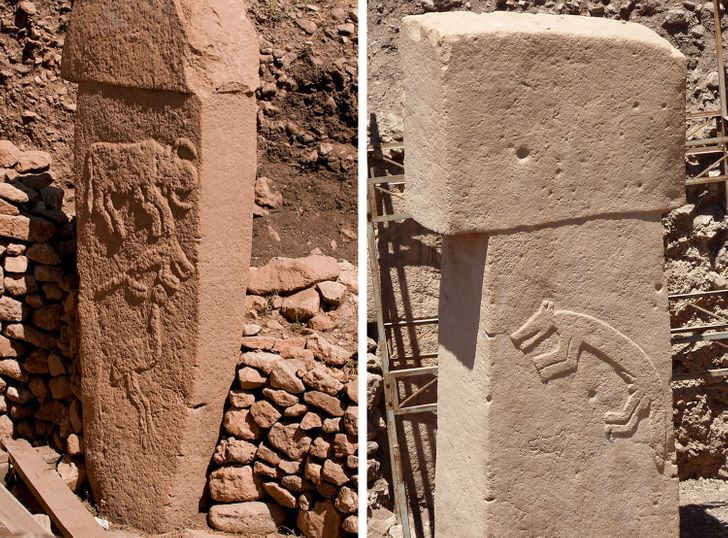 Gobekli Tepe. Archeologists discovered a settlement in Turkey, called Gobekli Tepe, that appears to be a temple. This might be a sign that people actually started to build temples long before they started to settle down in permanent towns. Gobekli Tepe has stone pillars with carved scenes of animals that even date to the 10th millennium BCE and this makes it the oldest temple.
Gobekli Tepe. Archeologists discovered a settlement in Turkey, called Gobekli Tepe, that appears to be a temple. This might be a sign that people actually started to build temples long before they started to settle down in permanent towns. Gobekli Tepe has stone pillars with carved scenes of animals that even date to the 10th millennium BCE and this makes it the oldest temple.
- NEXT GALLERY
-

- 34 Golden Savage Roasts
Mysterious monoliths of unknown origin. These 2 metal monoliths were discovered on separate occasions in November 2020. One in a remote area of the Red Rock Canyon State Park, Utah, which has since vanished as mysteriously as it appeared. The other one in Piatra Neamt, Romania. No one has claimed responsibility for their installation. Some think it resembles the monolith in the novel 2001: A Space Odyssey, installed on Earth 3 million years ago by an alien race to develop intelligent life. Whether it be a type of pop-art installation or something of extraterrestrial origin, it has sparked great interest and debate all over the planet.
8/8
1/8
Categories:
Wow



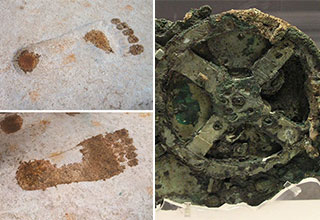





6 Comments